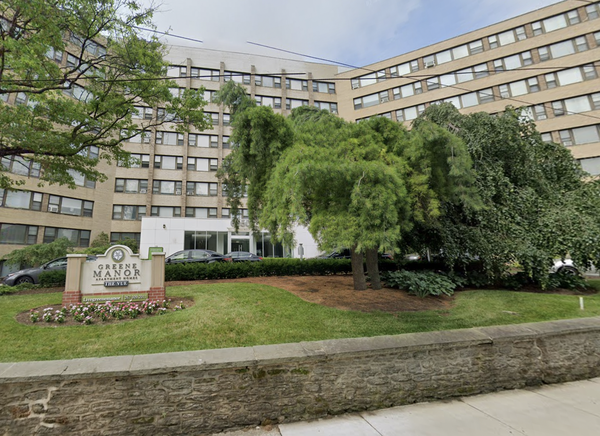The Philadelphia Housing Authority is becoming an eager buyer of struggling, privately owned apartment buildings that will help the city meet its goal of expanding access to affordable homes.
On Friday, the housing authority, which is mostly funded by the federal government, announced it had bought four apartment buildings with a combined 381 units in Germantown, for $76 million. In January, PHA had acquired another 74 units at two student apartment buildings in University City for $20 million, and it spent $51 million to buy the Dane apartment tower in West Philly's Wynnefield neighborhood.
MORE: Lombard Circle ramp to I-95 to close for 2 years due to highway capping project
"We are moving aggressively because of the current real estate market conditions," PHA CEO Kelvin Jeremiah said Friday. "Within the next few months, there are a number of deals that we have under contract. We'll probably spend close to $500 million and get well over 2,000 units as part of this process."
PHA historically has been a builder of public housing, constructing most of the 13,000 units that make up its portfolio in the city. In tandem with Mayor Cherelle Parker, who has a $2 billion plan to create or preserve 30,000 housing units in Philadelphia, Jeremiah has looked for opportunities to find move-in ready units for families.
Many of the properties PHA is targeting are Class A buildings – considered the highest quality in multifamily construction – that are only 40-60% occupied. Property owners have grown wary of meeting their mortgage obligations as interest rates remain high and inflation lingers longer than investors had hoped, and Jeremiah said they are initiating the conversations with PHA about their buildings.
Buying instead of building 'makes financial sense'
In years past, PHA typically has paid about $550,000 per unit for new construction homes. At most of the apartment buildings the agency has acquired, the range is between $130,000 and $260,000 per unit. PHA had planned to construct 7,000 new homes in the coming years, but Jeremiah has realized many of the city's housing needs already exist in neighborhoods where low-income residents are either being displaced or never had realistic options available to them to rent.
"We are seizing that opportunity because it makes financial sense for us," he said.
PHA plans to have a split of about 60% affordable units and 40% market rate units among its new properties. In many cases, families will be moved into these homes with their existing Housing Choice vouchers – the federal rental assistance program formerly called Section 8 – administered by PHA. The list for those seeking public housing units consistently is more than 700 people.
The purchased properties are the quickest path to PHA creating new pockets of affordable homes. With new construction, the regulatory process and financing often lengthen the timeline, meaning projects can take two to three years before buildings are ready for tenants. Jeremiah believes the housing authority can serve more residents in the properties it buys at less than half the cost to build homes – and help them more quickly, too.
"All of these units are market rate units and they are situated in some very good neighborhoods in the city," Jeremiah said. "Within weeks, we can have residents who are searching for units, who might need to be transferred, who might be on our waitlist, get access to high-quality units."
PHA senses 'urgency' to balance neighborhood affordability
City leaders believe one of the keys to a successful housing plan is opening up more of the city's neighborhoods to residents who can benefit from better access to jobs and transportation. Some of the properties PHA is considering are in Center City and other neighborhoods where housing costs tend to be prohibitive.
"Part of that is to make sure that we are identifying housing for residents of all incomes, but especially low-income residents to create balanced communities in Philadelphia," Jeremiah said.
The properties the housing authority purchased in Germantown are the Fairmount and Tudors buildings on West Johnson Street and the Vue and Gardens buildings on Green Street. In West Philly, the Legacy at Powelton and the University City Flats – both built as student housing – were sold to PHA due to vacancies created by more college students choosing to live with their parents since the COVID-19 pandemic, Jeremiah said.
Another PHA acquisition, the 12-story Brith Sholom senior housing complex in Wynnefield Heights, was purchased for about $67,000 per unit in September. The 70-year-old building's 356 apartments are in poor shape, but PHA will get $8 million from the Parker administration to rehab the property.
The housing authority plans to commit $4.8 billion to housing expansion and preservation during the next eight years in conjunction with Parker's housing agenda, which Jeremiah described as the most comprehensive effort to address housing needs from a Philadelphia mayor in the 14 years he has been with PHA. The mayor and Jeremiah met Thursday with U.S. Secretary of Housing and Urban Development Scott Turner to discuss ways the city can reduce regulatory hurdles to home construction. Since PHA relies on HUD for 93% of its funding, Jeremiah stressed the importance of continued federal support.
"(Turner) saw for himself how we are spending federal resources, that we are leveraging them with state, local and philanthropic partners to transform communities throughout Philadelphia," Jeremiah said. "I think he was pleased."

